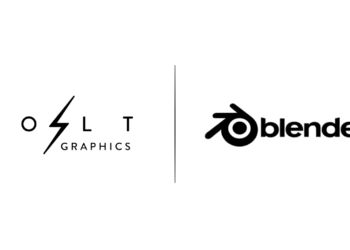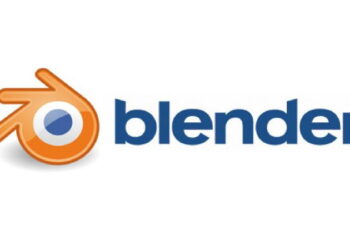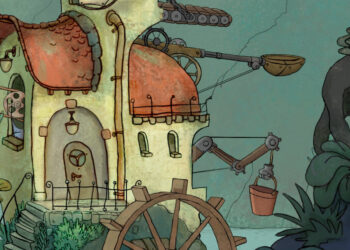Blender 5.0 is out now, introducing changes across modeling, UV editing, sculpting, grease pencil, animation, geometry nodes, rendering, compositing, video editing, and the user interface.
Several new modeling modifiers are now available, including updated array behavior with interactive gizmos, circular arrays, and improved instance handling. New instance-based tools simplify distributing objects across geometry, while a curve-to-tube modifier creates evenly spaced tubes with UVs and optional rounded caps. A geometry input modifier can replace the mesh of an object with another object’s data. Improvements in deformation, memory use, undo performance, and multi-resolution workflows round out the modeling changes.
In UV editing, selection has been rewritten so face and island selection behave predictably with sync selection enabled. Packing now supports custom regions, and new operators assist with alignment and tile-based movement. Performance improvements come from porting mirrored UV copying to C++.
Sculpting introduces pressure curves for brush settings and memory savings when using undo. Pixel art brushes were added to texture paint. Grease pencil editing gains a pen tool for spline-like stroke adjustments, editable curve data in the panel, per-point corner types, and render-time motion blur.
Animation updates include consistent keyframe navigation hotkeys, per-bone visibility for armature instances, integrated global transform copying, clearer timing markers, and further refinement of the timeline’s role. Shape keys can now be selected in groups, reordered more reliably, and flipped when names follow left and right naming conventions. Weight painting changes improve visualization of zero weights and make it easier to reduce values to zero. A new geometry attribute constraint allows objects and bones to follow geometry-derived attributes, extending rigging workflows.
Geometry nodes introduce a revised socket system with static shapes, support for bundle noodles to combine multiple connections, an expanded viewer node, clearer attribute overlays, and a new grid socket type for volumetric data. Mesh-to-grid, grid math, SDF tools, tangent access, essential node groups, and closure zones allow more flexible and modular node graphs.
Rendering changes include HDR output and view transforms, support for ACES 1.3 and 2.0, color picker updates, and wide-gamut workflows. Cycles gains non-experimental adaptive subdivision, improved volume rendering through null scattering, better subsurface handling, thin-film interference for metal shaders, updated hair rendering options, and a new render time pass. EEVEE improves hair and curve rendering, light probe baking, and material overrides. The viewport receives updated matcaps and significant speed gains for heavy instancing.
Compositing introduces a data-block system for node trees, a built-in asset shelf with ready-made node groups, a new convolve node, an updated glare node, and sequencer-compatible compositing. The video editor gains independent scene editing, compositor strip modifiers, improved strip handling, faster prefetching, a slip tool, and more responsive display modes.
User interface updates refine themes, improve tooltips, add clearer handles and overlays, update outliner behavior, adjust node editor interaction, and provide better organization of editor menus. Support for older hardware and legacy formats is reduced to simplify maintenance.
To find out more, visit the Blender website.








